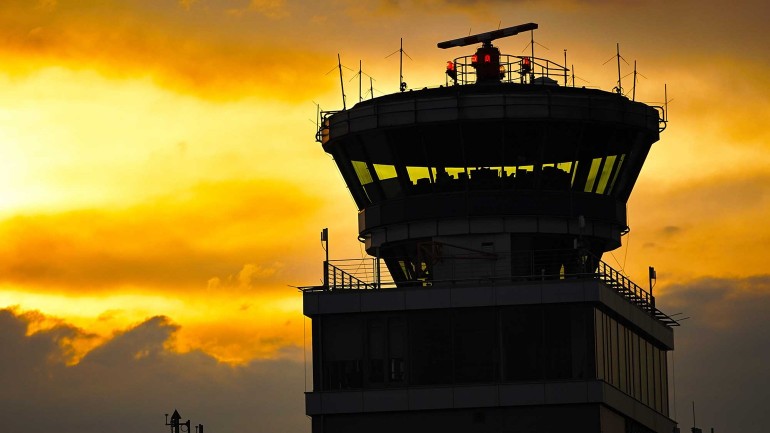Sponsored Listings:
In a June 4 speech rolling out his plan to privatize the U.S. air traffic control system (ATC), President Donald Trump offered big promises.
“Our plan will get you where you need to go more quickly, more reliably, more affordably and, yes, for the first time in a long time, on time,” he said.
But the proposal — to remove oversight of the ATC from the auspices of the FAA and into the hands of a nonprofit corporation funded by user fees — still faces substantial political hurdles in Congress.
Meanwhile, ATC experts have varying views on whether NextGen, the GPS-based ATC system that advocates of privatization say will be implemented faster under the nonprofit model, will lead to the improved efficiency and timeliness that Trump claimed.
Under the president’s plan, the transfer of ATC operations from the FAA to the nonprofit entity would be completed over a three-year period.
The board would initially have eight members, with two nominated by airlines, one proposed by airline unions, one proposed by general aviation interests, one nominated by airport trade groups and two put forward by the DOT. Those eight members would select a director, and together those nine individuals would pick four more people to fill out the 13-member board.
Trump’s proposal is sure to receive backing from the major U.S. airlines, except for Delta. Privatization has long been championed by Bill Shuster (R-Pa.), chairman of the House Committee on Transportation and Infrastructure.
But even with the president’s support, the forces that derailed Shuster’s push to privatize the ATC as part of last year’s FAA reauthorization bill might do so again, said Rui Neiva, aviation policy analyst at the Washington-based think tank Eno Center for Transportation.
Along with the Democrats, who are generally opposed to privatization, ATC reform is likely to face opposition from congressional appropriators who will be loath to give up control of approximately $11 billion annually, Neiva said.
And key Republican senators continued to show little enthusiasm for privatization in the days after Trump’s speech. Politico and the Hill reported that among those lawmakers who offered anemic statements to the press last week and asked skeptical question of DOT secretary Elaine Chao in a June 6 hearing were Senate transportation committee chairman John Thune (R-S.D.) and Senate aviation subcommittee chairman Roy Blunt (R-Mo.).
Driving the reticence of Thune, Blunt and other Republican senators are the concerns of small rural airports and the aviation community in general, which fears that privatization will favor commercial airlines.
In a statement last week, the Aircraft Owners and Pilots Association came out against the Trump proposal, saying it cannot support a policy that would impose user fees on general aviation.
The heart of the argument made by privatization advocates is that the nonprofit entity will more efficiently implement the satellite-based ATC system NextGen than the FAA could.
In his speech last week, Trump said that the FAA has thus far spent $7 billion on NextGen with few results. NextGen is slated to replace the radar-based ATC system currently used across the continental U.S.
In an interview last week, David Grizzle, who was the COO of the FAA Air Traffic Organization from 2011 to 2013, said he is a wholehearted believer in NextGen.
The system, he said, will enable controllers to pinpoint the location of a plane to within 10 feet, as opposed to the 1,000 feet possible with radar technology. For controllers, that will mean that bad weather days will be as easy to manage as good weather days are now.
“That’s really the promise of NextGen,” said Grizzle, who heads the aviation consulting company Dazzle Partners. “You substantially reduce the impact of weather and all the environmental factors including winds, which slow down the system.”
NextGen, he said, will reduce delays.
Not everyone agrees.
“It won’t make a difference at all,” Michael Baiada, a former United pilot who is the president of the airline consulting firm ATH Group said of NextGen.
“It is the underlying process that is the problem. It is not the navigational or communication technology that is a problem,” he said.
Baiada estimated that 80% of airline delays are the fault of the airlines themselves, in large part because they don’t properly manage their supply chain and assets.
On the ATC side, existing tracking technologies are easily good enough to track a plane from thousands of miles away, he said. But controllers only deal with aircraft once they enter their sector, which leads to disjointed and inefficient flight management.
Grizzle agreed that the ATC process has to be improved, but he said that should be done in concert with NextGen implementation.
Sоurсе: travelweekly.com










